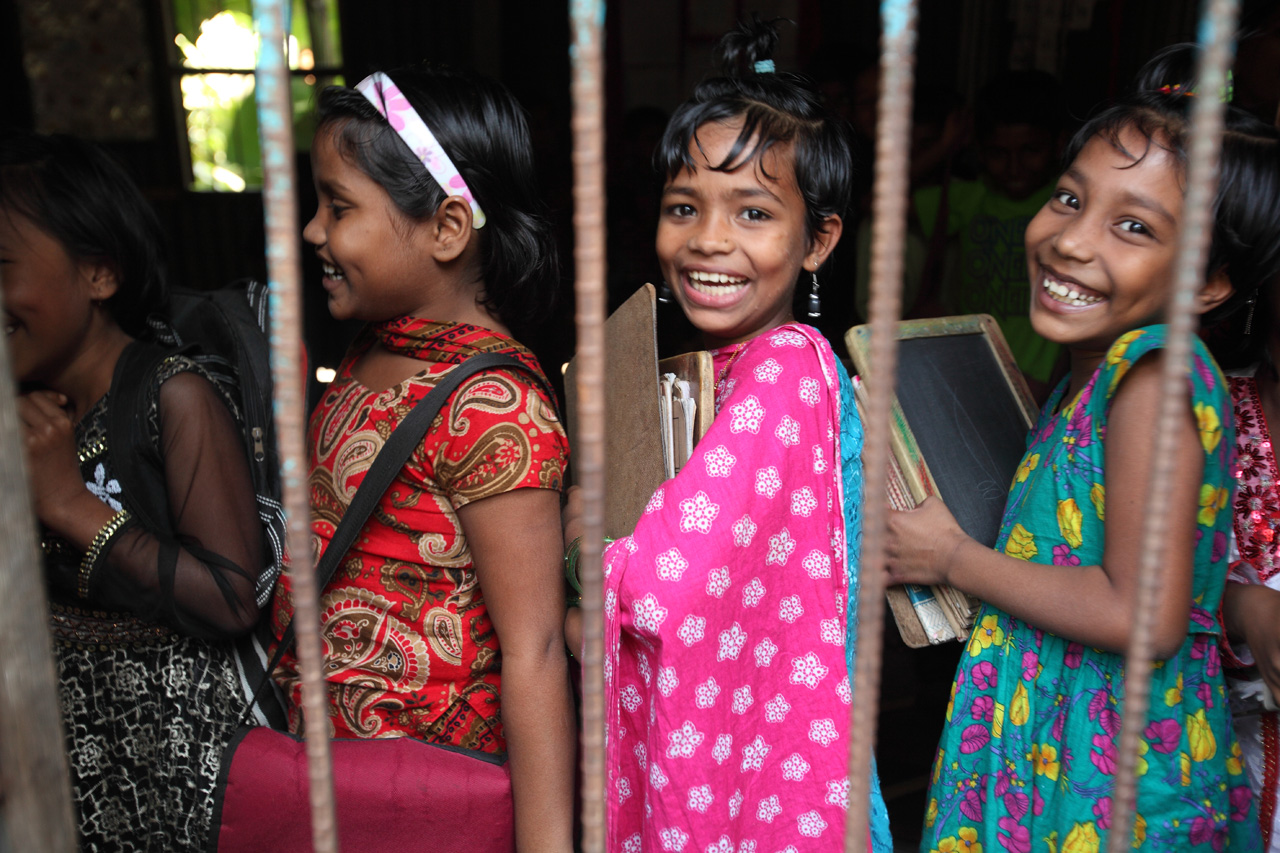Bangladesh has a remarkable primary education enrolment rate – 97.97%, but 18.85% of students drop out before completion. Drop-out rates are even higher in urban informal settlements, hard-to-reach areas, such as haor (wetlands) and char (riverine islands). BRAC is seeing significant improvements in drop-out rates through the implementation of its Bridge Schools initiative – specially-designed, accelerated programmes to bridge learning gaps and support children to complete primary education.

Students at a BRAC Bridge School (Photo caption)
Kanakchapa's Story
Kanakchapa was studying in class 2 in a remote haor (wetland) region of Sunamganj, Bangladesh, when her mother died. Kanakchapa's father had to juggle working as a day labourer and raising six children. Though Kanakchapa was still at an age where she required someone to look after her, she became a full-time guardian for her younger siblings. Eventually, she dropped out of school, while her father and elder brother worked to provide for the family.
"I used to look out the window and see my friends going to school. I wanted to go back to school, but I had to help my family. I did not have a choice but to drop out"
Giving children a second chance
Bridge Schools work with children living in marginalised situations who have dropped out of the formal-school system between classes 2 and 4. The model was first piloted by BRAC in Bangladesh in 2013, with 39 schools, and has rapidly expanded since, now engaging 59,433 students through 2,100 school sites.
Key Statistics:
- >50% of students are girls
- 99.83% pass rate in Primary Education Completion Examination
- 30,428 students graduated to date
How are students identified?
Areas with the highest drop-out rates are identified through:
- Government education reports
- Data from various organizations
- BRAC's internal insights
Staff then work with local education offices to prioritize vulnerable areas and conduct door-to-door surveys with community leaders.

A BRAC Bridge School classroom (Photo caption)
Completing primary education in 36-40 months
Each cohort in a Bridge School is composed of approximately 25-30 students between the ages of 8-12. The program features:
- Initial aptitude test to assess competency level
- 4-month bridge course to address learning gaps
- Customized syllabus based on national curriculum
- Intensive teacher training programs
Alternative approaches to learning in times of crisis
Since March 2020, BRAC has adapted to school closures by:
- Home-based learning through feature phone conference calls
- Small group sessions (3-4 students)
- Focus on psychosocial counseling and wellbeing
- Supplemental lessons through community radio and television
Kanakchapa's Journey Continues
Although currently learning through phone classes due to the pandemic, Kanakchapa's education is back on track:
"When Halima Apa approached my father to admit me into school again, I was so happy. When he finally agreed, I was even happier! I will complete primary school and continue my secondary education."
Teacher Halima visited multiple times and worked with neighbors to find a solution for childcare so Kanakchapa could return to school.
The BRAC Bridge Schools Programme for Out of School Children in Bangladesh is an initiative implemented in partnership with Educate A Child, a global programme of the Education Above All Foundation.
BRAC started working in education in 1985. Its high quality, affordable, scalable schooling model has made it the world's largest provider of private secular education. Its holistic approach to lifelong learning, addressing educational needs from early childhood to higher academic levels supported over 15 million students across five countries to graduate to date.
